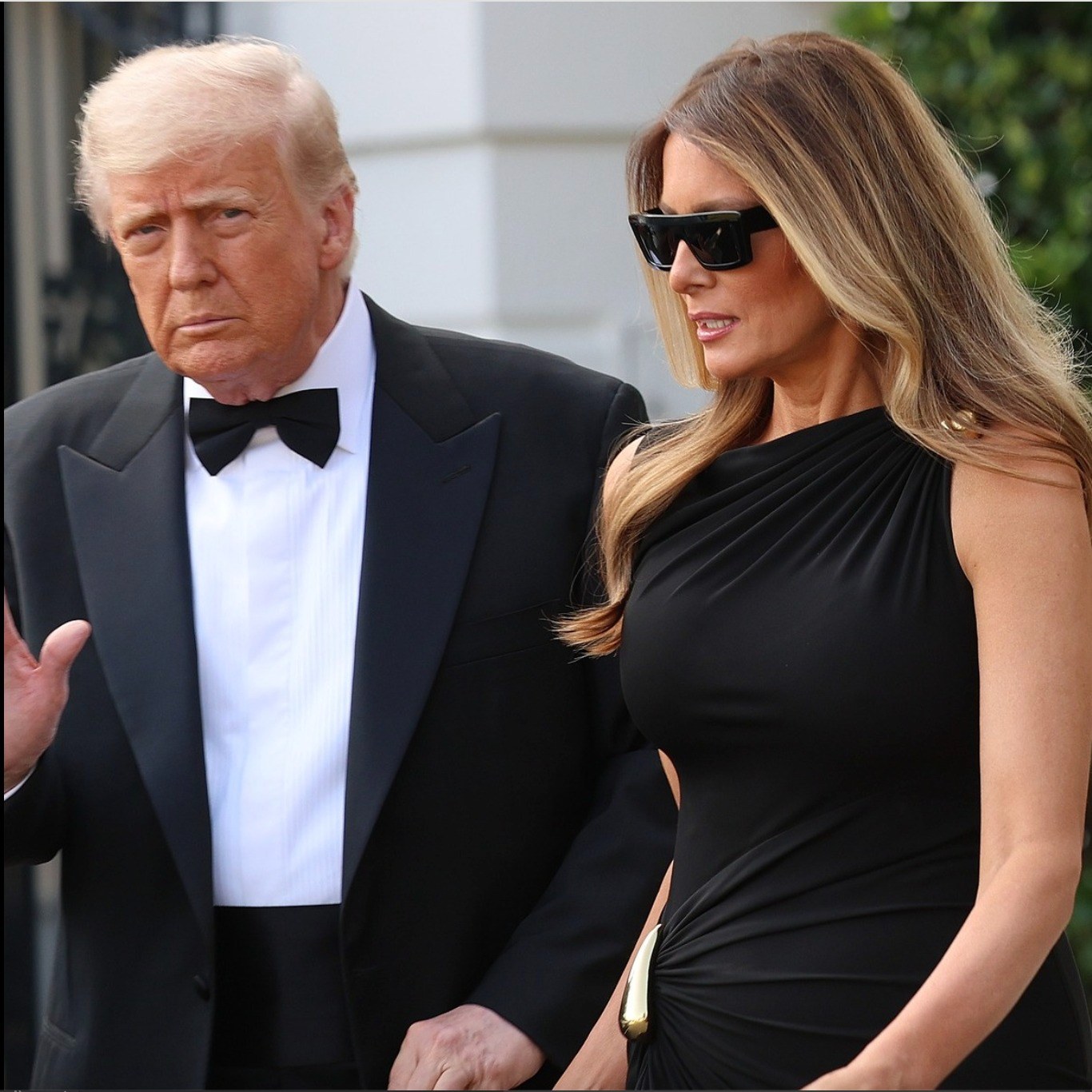SOTD – Trump and Melania photo sparks social media stir!
The night Donald and Melania Trump stepped into the Kennedy Center for a performance of Les Misérables, the atmosphere inside Washington’s most iconic arts venue snapped to attention. For the first time since overhauling the institution’s leadership and programming, the President returned to its gilded halls—setting the stage for an evening that would become part political theater, part cultural lightning rod, and part social-media spectacle.
Trump entered the presidential box to a rumble of applause tangled with a chorus of boos. The reaction wasn’t subtle. It wasn’t polite. It was visceral — the kind of split-second public verdict Washington has mastered. As the crowd saw him settle into his seat, a wave of chanting broke out. Supporters answered the jeers with shouts of “U-S-A,” and Trump responded with a signature three-pump fist, a gesture that signaled he was fully aware of the room’s divided temperature.
By the time intermission rolled around, the tension had thickened. Lights came up, and the noise swelled. Some shouted their support, some hurled insults. The entire moment mirrored the themes of the show onstage — resistance, power, upheaval — only now the barricades were figurative and the revolutionaries were scattered among ticket holders in evening attire.
In the days leading up to the event, controversy had already begun simmering. Members of the Les Mis company reportedly chose to skip the performance entirely. The production allowed cast opt-outs, giving performers the freedom to avoid appearing in front of the President if they wished. Their absence added another layer to a night brimming with cultural fault lines.
Adding fuel was a group of drag performers seated in the house — occupying donated seats from guests who opposed Trump’s attendance. It was a deliberate visual counterpunch to Trump’s earlier vow to purge the Kennedy Center of “woke” and “anti-American” programming. For critics, the drag performers’ presence was symbolic resistance. For supporters, it was another example of culture-war theatrics.
The timing was impossible to ignore. Trump’s visit came the same week federal forces were deployed to break up protests in Los Angeles. Commentators couldn’t resist the parallel: the President watching a musical about rebellion while his administration clamped down on unrest outside the theater. Social media lit up with accusations of irony so thick it bordered on satire.
But Trump’s appearance wasn’t just about optics. It doubled as a fundraising show of strength. Since orchestrating a conservative reshuffling of the Kennedy Center’s governing board earlier in the year — a move that critics say chilled subscriptions and unsettled donors — Trump insisted the night had revitalized the institution.
“We raised more than $10 million,” he told reporters. “It’s going to be incredible.”
Kennedy Center officials pushed back at some of the darker interpretations circulating about falling attendance, arguing that subscription comparisons were misleading due to campaign timing and new season packages rolling out. Still, it was clear the Center was in the middle of a transformation — one that would have long-term ripples for its programming and public perception.
But the moment that truly ignited social media wasn’t political, cultural, or economic.
It was a single photograph.
As Trump and Melania exited the venue, a photographer captured the President holding the First Lady’s hand — or rather, holding only her thumb. The image erupted across platforms within minutes. For a couple whose every micro-expression has been dissected for years, this odd handhold became instant fodder. Analysts joked, critics speculated, fans defended, and memes multiplied like wildfire.
None of it changed what unfolded inside the theater, but it underscored the larger pattern: with the Trumps, even a millisecond of body language becomes its own storyline.
The Kennedy Center outing quickly became a cultural Rorschach test.
To supporters, the evening showed a President reclaiming a premier arts institution, energizing donors, and brushing off hostility with confidence. They saw strength and spectacle, perfectly timed to showcase leadership and resilience.
To critics, it was tone-deaf at best and provocative at worst — a President watching a revolution-themed musical while being booed by a crowd unsettled by his policies. They saw a disconnect between the themes of the show and the actions of the administration, amplified by cast absences and protest symbolism in the seats.
To everyone else, it was simply Washington in 2025: where everything—from a fundraiser to a fist pump to a thumb-hold—becomes a national debate.
But strip away the noise, the memes, the chants, and the political fireworks, and the real takeaway is simpler:
For one night, live theater pulled a divided nation into the same room, under the same lights, reacting to the same moment from opposite sides of the aisle.
And that alone says everything about the times we’re living in — times when even an evening at the Kennedy Center becomes a battleground, a spectacle, and a mirror reflecting exactly who we are right now.
